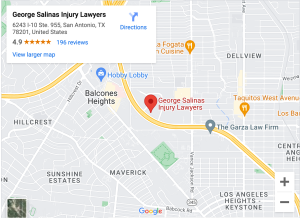
Soft tissue injuries can cause disabling symptoms. You could experience pain, swelling, and stiffness after a soft tissue injury. You might even need surgery to repair the injury. And even with surgery, doctors cannot guarantee that you will recover fully.
Sometimes, soft tissue injuries can produce long-term complications. Soreness, limited mobility, and arthritis might become part of your daily life after a soft tissue injury. As a result, your injury could significantly limit your ability to work and care for yourself.
What Are Soft Tissues?

The only “hard” tissues in your body are your bones. But soft tissues do not include everything except your bones. Instead, soft tissues usually refer only to the soft tissues in your musculoskeletal system.
Specifically, soft tissues typically do not include:
- Blood vessels
- Lymph ducts
- Nerves
- Organs
- Skin
Soft tissues refer to those structures that cooperate with your skeleton to support and move your body, such as the following:
Ligaments
These tough and elastic tissues hold bones together. They also provide the strength to guide the movement of your joints.
Muscles and Tendons
Muscles attach to your skeleton through tendons. Together, the muscles and tendons use the leverage of your bones to move your body.
Cartilage
Cartilage lines your joints to provide a smooth, lubricated surface. As a result, when your bones move, they slide across each other instead of grinding.
Connective Tissues
Connective tissues attach your other structures to your musculoskeletal system. For example, connective tissues hold your skin to your muscles. They also hold your organs in place.
How Does a Soft Tissue Injury Happen?
Soft tissue injuries can happen in a few ways.
Blunt Injuries
If you get hit by something without suffering an open wound, you have a blunt injury. Thus, if a heavy box falls on you from a shelf in a work accident, you will probably have a blunt injury.
Blunt injuries can also happen when you hit something. When you hit your hip on the ground after a slip and fall, you suffer a blunt injury.
Penetrating Injuries
If an object pierces soft tissue, you suffer a penetrating injury. This type of injury could include an abrasion on your leg from a motorcycle accident or a cut on your head from a fall.
Penetrating injuries bleed. Bleeding can cause your blood pressure to drop, leading to shock. Extended bleeding can deprive your organs of oxygen, leading to organ or brain damage.
Penetrating injuries also allow microorganisms to invade your body. Once inside, the microorganisms can multiply and cause an infection. Infections can make you very sick. Your body’s reaction to an infection can trigger sepsis.
Hyperextension
Hyperextension happens when your soft tissues get pulled, twisted, or bent beyond their capacity. In a mild hyperextension injury, the tissue stretches. When the tissue tears, you have a moderate or severe hyperextension injury.
One of the most common causes of hyperextension injuries is a car accident. When you collide with another vehicle, your body whips around inside your car. Even if you do not hit anything, the whipping can hyperextend tissues in your knees, neck, and back.
What Are Some Examples of Soft Tissue Injuries?
Your injury will produce different symptoms and have a different prognosis depending on which tissues get damaged. Some types of soft tissue injuries you might suffer in an accident include:
Lacerations
Penetrating injuries can lacerate your soft tissue. When your muscle gets severed, you will experience pain, swelling, and bleeding from the blood vessels that feed the muscle. A doctor may need to stitch up your laceration to help it heal. Stitches will also reduce your risk of infection and stop the bleeding.
Bruises
Bruises happen when a blunt injury ruptures the blood vessels under the skin. Bruises cause blue, black, yellow, or green discoloration. They can also cause pain and swelling. Bruises usually heal on their own within a few weeks.
Sprains
When you hyperextend a ligament, you suffer a sprain.
You may experience symptoms such as:
- Bruises
- Joint pain
- Inflammation
- Limited joint motion
You might also feel your joint pop when you injure it.
In a mild sprain, you stretch the ligament. These sprains usually heal within four to six weeks with home care and rest. In a severe sprain, you tear the ligament. These sprains may require reconstructive surgery.
Strains
Strains happen when you hyperextend a muscle or tendon.
These injuries can cause:
- Swelling
- Stiffness
- Weakness
- Muscle pain and spasms
Strains rarely require surgery. Usually, your strain will heal in four to six weeks with rest. Under some circumstances, you may require surgery to repair a severely torn muscle or tendon.
Torn Cartilage
When you tear the cartilage in a joint, any loose pieces will float around the joint and can irritate it. They can also lodge between the bones.
Even if the cartilage remains attached, the change in position can cause your bones to grind against each other. This grinding can eventually produce osteoarthritis.
Torn joint cartilage can cause symptoms such as:
- Joint pain
- Swelling
- Hitching in the joint
- Limited range of motion
- Grinding sensation or sound in the joint
Cartilage can take several months to regrow. If the injury left loose pieces of cartilage in your joint, doctors may operate to remove them.
How Can You Get Compensation for a Soft Tissue Injury Caused By Someone Else?
You can seek accident compensation for soft tissue injuries that resulted from someone else’s negligent actions. To prove negligence, you must show that the other party failed to exercise reasonable care.
For example, if a shop owner failed to clean up a spill even after someone told them about it, the shop owner might have acted negligently. If you subsequently slipped and tore a knee ligament due to the spilled liquid, you might have a negligence claim for compensation.
The compensation you can seek for an injury will include your economic losses, such as past and future medical expenses, lost wages, and diminished earning capacity. It can also cover your non-economic losses, like pain, suffering, and disability.To discuss your accident and the compensation you can seek for your soft tissue injury, contact our team George Salinas Injury Lawyers at (210) 225-0909 for a free consultation with a San Antonio personal injury lawyer.


